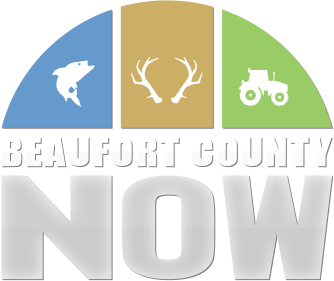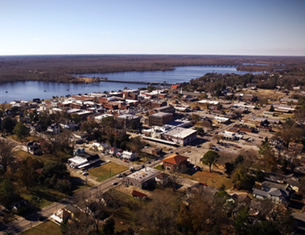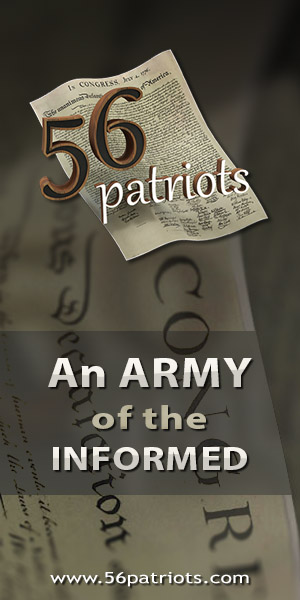The Human Touch Revealing All that is Real
Fielding Maritime History
Publisher's note: The author of this post, Lacey L. Gray, is a contributor to ECU News Services.

Nine East Carolina University graduate students are investigating a shipwreck close to home this fall as part of an annual field school.
The students in ECU's Program in Maritime Studies, housed in the Thomas Harriot College of Arts and Sciences Department of History, are working in Washington, North Carolina, about 30 minutes from campus.

"So far, we don't know much about the identity or history of the site that the students are investigating," said Dr. Jason Raupp, primary investigator and assistant professor of maritime studies. "This isn't uncommon. Often, the best part of the field school is shining light on a wreck that is little understood."
According to Raupp, the wreckage lies very close to the shore of what was once part of Washington's active commercial waterfront. Preliminary archival research shows the area was the site of mills associated with the historic lumber industry.
"We have found the remains of at least one old seawall or wharf structure lying alongside the wreck that are likely connected with the lumber mill," Raupp said. "Our current theory is the ship was moored at this place to extend the wharf structure and assist with moving timber between barges and the mills. Over time, the vessel likely fell into a state of disrepair before sinking in place."
Will Nassif, a graduate student in maritime studies who plans to defend his thesis this fall, has conducted shoreline surveys at three sites throughout Washington's harbor.
"Each site along the waterfront indicates another innovation by historic industries to make their business more efficient and productive," he said. "This directly benefits my own research, since the central theme of my research has been that waterfront installations were built, altered or improved in response to specific economic needs."
Through the field school, students are putting into practice the methods and skills needed to investigate a maritime archaeological site.
"For this field school we are combining many of the skills that have traditionally been used to understand the spatial layout of wreck sites with modern global positioning technology (RTK GNSS) that allows for pinpoint accuracy," Raupp said.
"My cohort and I are currently in the process of mapping the wreck," said Amber Cabading, field school participant and maritime studies major. "The wreck is situated in 4 feet of water and the visibility is about 12 inches, on a good day. Naturally, this poses a challenge when recording a site; therefore, much of what we are doing is archaeology by Braille.
"At first, it was a bit difficult to interpret what our feet and hands were feeling, but once we began to sketch what we felt, the wreck began to take shape. It is really rewarding to see it all come together and to know that we are contributing to the record of archaeological history in the area."
Cabading also values the faculty mentorship and guidance she receives from Raupp and Dr. Jennifer McKinnon, associate professor of maritime studies and co-investigator of the project.
"Dr. Raupp is fantastic at explaining complex information in a very digestible manner," Cabading said. "For instance, while working on the site, my dive buddy and I were having difficulty understanding our section. Dr. Raupp talked us through the configuration and construction of the vessel in a way where, suddenly, all of the convoluted planking and frames made sense, and we could see it — well, feel it actually.
"Dr. McKinnon is my thesis advisor and has proven to be a treasure trove of information. Every time I have hit a roadblock, she's always there to encourage me to explore different perspectives, while providing various resources to aid my research," Cabading said.
"We are fortunate to have a program that draws some very talented graduate students to study maritime archaeology with us," McKinnon said. "They come to ECU and are committed to their education and learning the practice of researching and protecting maritime heritage. Field school is just one, very fun yet challenging, course that prepares them for a future within the field of maritime archaeology."
Students will be at the site in Washington, until Sept. 1. Upon completion of the fieldwork, they will process and analyze the data, and conduct historical research to answer questions related to the history of the vessel, the area and its possible association with the lumber mill. Then, all of the data will be compiled into a professional report submitted to the North Carolina Department of Natural and Cultural Resources Underwater Archeology Branch.
"Up to this point, I have merely read archaeological reports. Now, I'm experiencing firsthand how these archaeological reports are made," Cabading said. "The techniques of data collection and interpretation are the foundational skills that will enable us to pursue various career paths within the maritime archeological field."
After completing her degree, Cabading plans to work in cultural resource management before eventually pursuing a career as a state maritime archeologist advocating and managing the protection of underwater cultural heritage.
Go Back

Graduate students Patrick Boyle, left, and Andi Yoxsimer document their research during investigation of the shipwreck in Washington, N.C. | Photo: Rhett Butler
Nine East Carolina University graduate students are investigating a shipwreck close to home this fall as part of an annual field school.
The students in ECU's Program in Maritime Studies, housed in the Thomas Harriot College of Arts and Sciences Department of History, are working in Washington, North Carolina, about 30 minutes from campus.

Maritime studies major Amber Cabading said it is rewarding knowing she is contributing to the record of archaeological history in the area. | Photo: Contributed
"So far, we don't know much about the identity or history of the site that the students are investigating," said Dr. Jason Raupp, primary investigator and assistant professor of maritime studies. "This isn't uncommon. Often, the best part of the field school is shining light on a wreck that is little understood."
According to Raupp, the wreckage lies very close to the shore of what was once part of Washington's active commercial waterfront. Preliminary archival research shows the area was the site of mills associated with the historic lumber industry.
"We have found the remains of at least one old seawall or wharf structure lying alongside the wreck that are likely connected with the lumber mill," Raupp said. "Our current theory is the ship was moored at this place to extend the wharf structure and assist with moving timber between barges and the mills. Over time, the vessel likely fell into a state of disrepair before sinking in place."
Will Nassif, a graduate student in maritime studies who plans to defend his thesis this fall, has conducted shoreline surveys at three sites throughout Washington's harbor.
"Each site along the waterfront indicates another innovation by historic industries to make their business more efficient and productive," he said. "This directly benefits my own research, since the central theme of my research has been that waterfront installations were built, altered or improved in response to specific economic needs."
Through the field school, students are putting into practice the methods and skills needed to investigate a maritime archaeological site.
"For this field school we are combining many of the skills that have traditionally been used to understand the spatial layout of wreck sites with modern global positioning technology (RTK GNSS) that allows for pinpoint accuracy," Raupp said.
"My cohort and I are currently in the process of mapping the wreck," said Amber Cabading, field school participant and maritime studies major. "The wreck is situated in 4 feet of water and the visibility is about 12 inches, on a good day. Naturally, this poses a challenge when recording a site; therefore, much of what we are doing is archaeology by Braille.
"At first, it was a bit difficult to interpret what our feet and hands were feeling, but once we began to sketch what we felt, the wreck began to take shape. It is really rewarding to see it all come together and to know that we are contributing to the record of archaeological history in the area."
Cabading also values the faculty mentorship and guidance she receives from Raupp and Dr. Jennifer McKinnon, associate professor of maritime studies and co-investigator of the project.
"Dr. Raupp is fantastic at explaining complex information in a very digestible manner," Cabading said. "For instance, while working on the site, my dive buddy and I were having difficulty understanding our section. Dr. Raupp talked us through the configuration and construction of the vessel in a way where, suddenly, all of the convoluted planking and frames made sense, and we could see it — well, feel it actually.
"Dr. McKinnon is my thesis advisor and has proven to be a treasure trove of information. Every time I have hit a roadblock, she's always there to encourage me to explore different perspectives, while providing various resources to aid my research," Cabading said.
"We are fortunate to have a program that draws some very talented graduate students to study maritime archaeology with us," McKinnon said. "They come to ECU and are committed to their education and learning the practice of researching and protecting maritime heritage. Field school is just one, very fun yet challenging, course that prepares them for a future within the field of maritime archaeology."
Students will be at the site in Washington, until Sept. 1. Upon completion of the fieldwork, they will process and analyze the data, and conduct historical research to answer questions related to the history of the vessel, the area and its possible association with the lumber mill. Then, all of the data will be compiled into a professional report submitted to the North Carolina Department of Natural and Cultural Resources Underwater Archeology Branch.
"Up to this point, I have merely read archaeological reports. Now, I'm experiencing firsthand how these archaeological reports are made," Cabading said. "The techniques of data collection and interpretation are the foundational skills that will enable us to pursue various career paths within the maritime archeological field."
After completing her degree, Cabading plans to work in cultural resource management before eventually pursuing a career as a state maritime archeologist advocating and managing the protection of underwater cultural heritage.




















